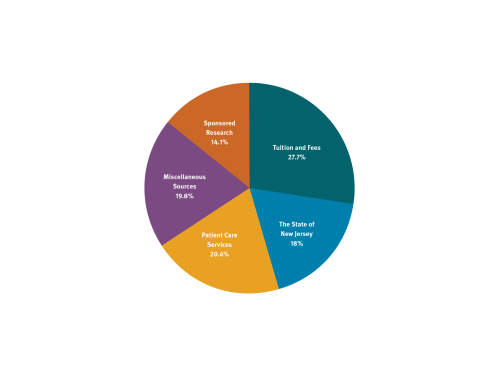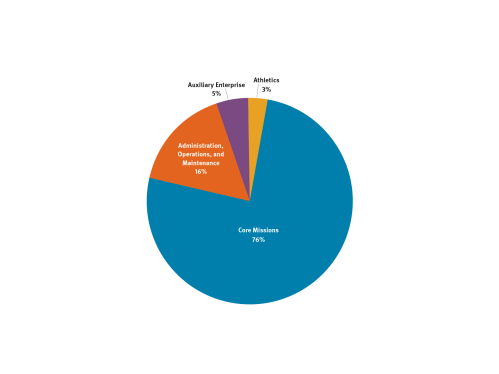Budget Facts
Supporting Our Mission
Rutgers' budget reflects our priorities, with the majority of our budget dedicated to student instruction, research, and public service. The charts below depict the distribution of revenues and expenditures in Rutgers' $5.9 billion budget for the 2025-2026 academic year.
Revenues
Where does our revenue come from? The university receives revenue from the following public and private sources.
-
Tuition and fees: 27.7 percent
-
The State of New Jersey: 18 percent
-
Patient care services: 20.4 percent
-
Miscellaneous sources: 19.8 percent
-
Sponsored research (grants and contracts): 14.1 percent
Source: FY26 Budget, University Finance and Administration

Expenditures
How do we spend our budget? A significant portion of the university’s expenditures support classroom instruction, academic support, student services, scholarships, research, public service, extension, and patient care.
- Core missions of academic instruction, research, public service, and patient care, including compensation costs: 76 percent
- Administration, operations, and maintenance: 16 percent
- Auxiliary enterprise: 5 percent
- Athletics: 3 percent
Source: FY26 Budget, University Finance and Administration

Rutgers' Endowment
Rutgers' endowment is a set of funds that come primarily from charitable donations raised through Rutgers University Foundation. The goal of the endowment is to provide a permanent source of income beyond tuition and state monies to support the university's mission.
At the end of the 2024 fiscal year, the endowment assets were $2.058 billion*. The endowment has become an increasingly important element in the university's funding of more student aid, pioneering research, innovative teaching programs, and new technologies. The endowment is also essential to the university's ability to attract and retain senior faculty and to maintain a vast physical infrastructure, including classrooms, libraries, laboratories, and health care facilities.
*Figures from FY24 are preliminary

For More Information